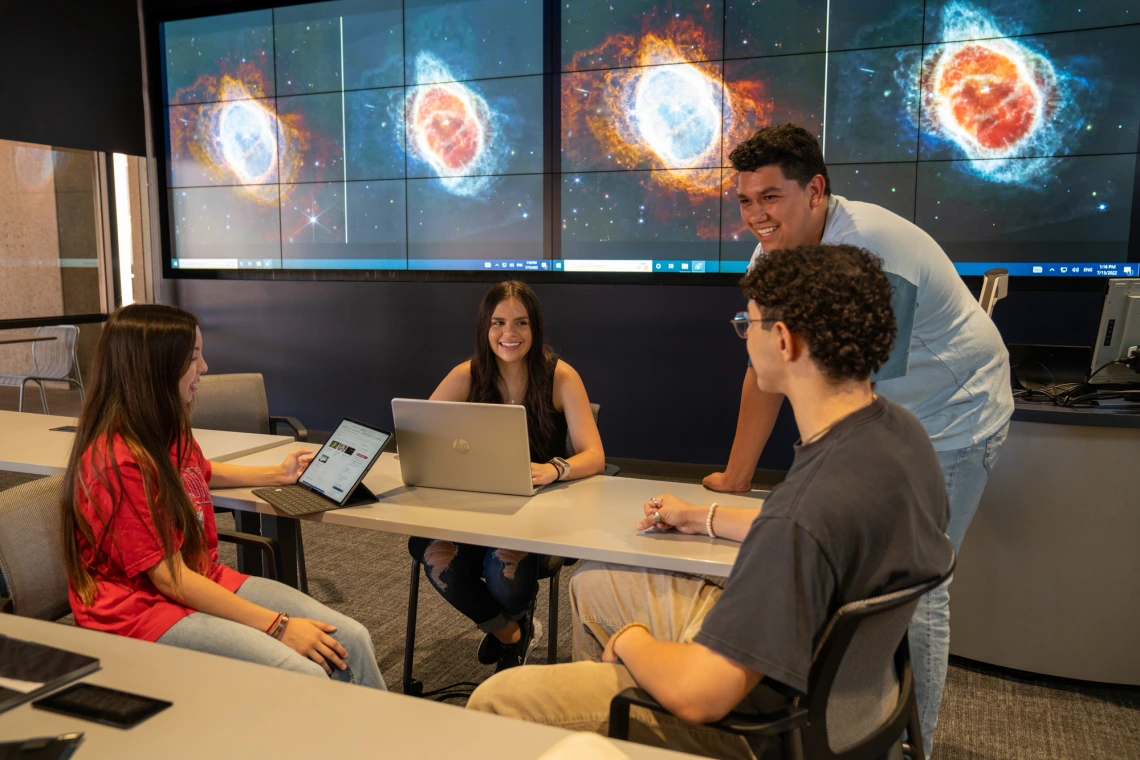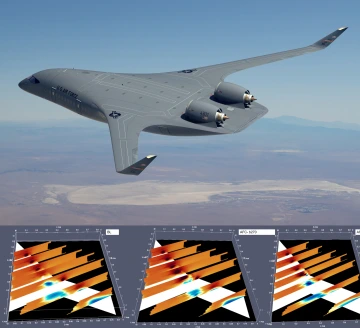Showcasing the Library, Showcasing Research
UITS Data Visualization, the CATalyst Studios and university researchers put on an impressive display.

The Library’s Data Studio and Viz Wall are reservable by all members of the campus community.
University Libraries Dean Shan Sutton arranged a tour of the Main Library for new President Suresh Garimella on April 23. The CATalyst Studios near the front doors make an impressive visual impact, especially when the large Viz Wall in the Data Studio has a display up.
CATalyst Studios director Jen Nichols contacted Devin Bayly for help with content for the screens during the President’s tour. Devin is a data/visualization consultant for UITS Research Technologies and collaborates with Library staff regularly. He was able to collaborate with some of the researchers he works with on visualizations to highlight on the display.
Researchers Highlighted
Devin was excited to help show off the Library’s resources and his and his researchers’ work to President Garimella. He regularly collaborates with the Library’s Data Cooperative and is at the Library’s CATalyst Data Studio every Tuesday for the Data & Viz Drop-in where he helps students learn about data visualization.
Whether he is helping researchers using data from the UITS HPC or other sources, or introducing students to data visualization, Devin works to find the best way to tell the data’s story in images. He says, “There are no bad visualizations, but there are visualizations that don’t serve a goal.”



